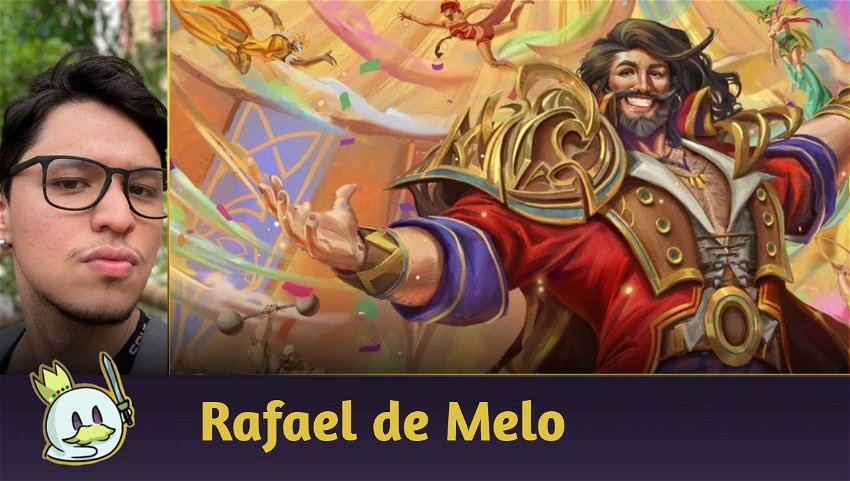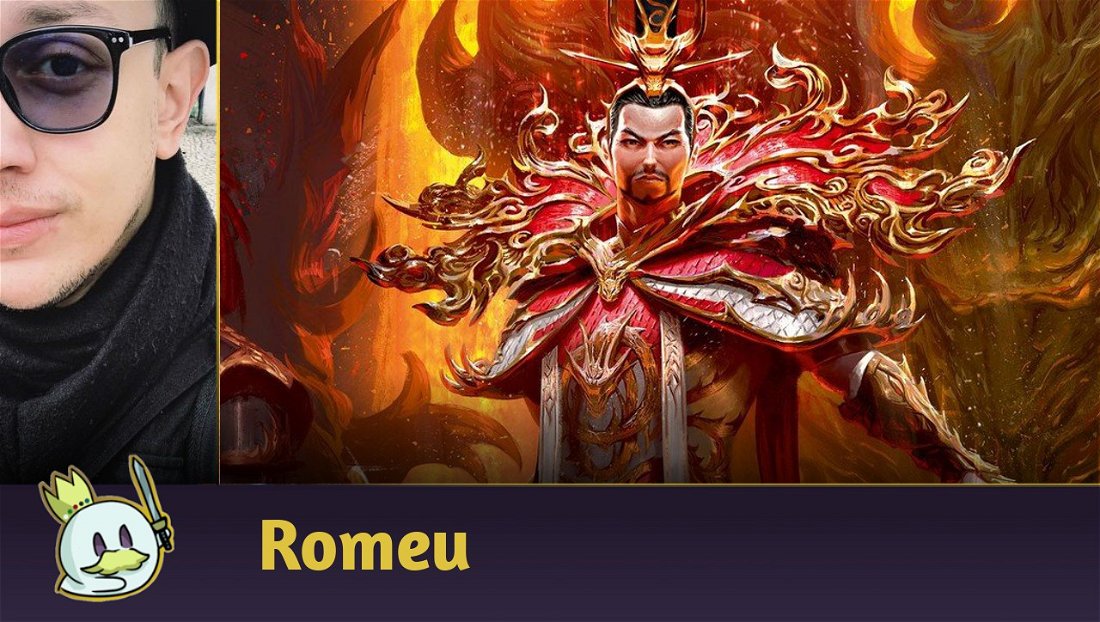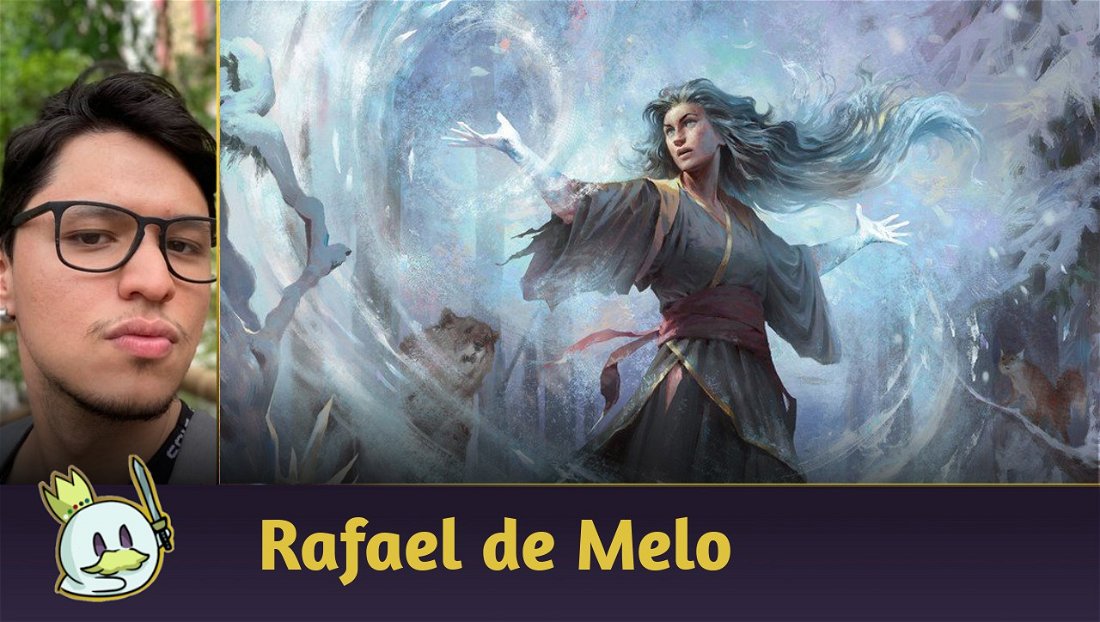Introduction
In many games, whether physical or virtual, occasionally some imbalance occurs due to a number of factors: lack of testing by developers, opportunity for older cards to work in unexpected ways, a new mechanic that interacts unpredictably, among others.
In digital games, these issues can be resolved with nerfs, but doing so in tabletop is way harder. In TCG games that have continuous inflows of new cards, adjustments are also sometimes necessary to balance the game, and this balancing occurs through bans.
Banning a card means you can no longer use it in your deck, but when we go through the list of these cards, some seem harmless for a ban, so why are they here? That's the point I'm going to address today in Flesh and Blood!
The Living Legends System


Before dealing with the banned list itself, I would like to address a system that I have not seen in any other card game that allows Metagame rotation and renewals without the need for bans: the Living Legends (LL) system.
The system itself is quite simple: when a hero's deck achieves high rankings in tournaments, it earns a certain amount of points, and after reaching a certain amount (1000 for Classic Constructed and 500 for Blitz), the hero receives the status of Living Legend along with their signature weapon. This means, in practice, that any hero with this status cannot be used in official tournaments.
There are those for and those against this system, but the fact is that it allows you to measure how strong a hero is and, if their power level is above the average, they will quickly reach LL status and leave the format.
Currently, three heroes have this stat in Classic Constructed: Bravo, Star of the Show, Chane, Bound by Shadow (and his weapon Galaxxi Black) and Prism, Sculptor of Arc Light (and her weapon Luminaris) and only one has this stat in Blitz: Viserai (and his weapon Nebula Blade).
There isn't much to say about these heroes, as they all proved to be strong in their respective Metagame and formats, but one stands out for having a significant amount of points.
Honorable Mention: Bravo, Star of the Show

Bravo, Star of the Show is by far the strongest hero ever released in the game. He was equipped with strong attack cards (since that is what a Guardian naturally has), however, with the range of elemental cards. Bravo could utilize the control that Oldhim, Grandfather of Eternity offered along with the aggression of Briar, Warden of Thorns and a few more exclusives of Lexi, Livewire - making him extremely flexible. In addition to the possibility of also using weapons and equipment that were restricted to talents.
Bravo was so strong that he reached LL status with 1582 points. This means that he has won and ranked in so many tournaments simultaneously that he has (far) exceeded the required score.
The Banned List
Before presenting the banned list, I would like to make a few comments. I will not comment on cards that have already been banned and are no longer banned today. All justifications presented here are those used by the company.
In addition to banned cards, the list also has suspended cards. In practice, this nomenclature does not change the fact that you cannot use any of them, but it is important to highlight their differences. Saying that a card is banned means that it has a very high-power level and that its existence unbalances the game, while a suspended card is not necessarily a problematic card for the game as a whole, but on certain heroes or strategies they can present problems. Even when we say that a card is suspended, it is also an indication that it may return to format in a future update of the list, or if it is really problematic to be banned permanently.
It's important to remember that when a card is banned or suspended, any of its colors become invalid in the game, so you don't ban just one color.
To write this article, I am using the latest banned list (from 01/06/2023).
Classic Constructed

If we consider that Classic Constructed covers all cards legal in tournament since the first collection of the game, the format has a small banned list - having only seven banned cards and one suspended.
— > Awakening: The card proved problematic in guardian decks - specifically Bravo, Star of the Show and Oldhim, Grandfather of Eternity for granting extremely explosive turns without necessarily having many cards in the hand and at a low cost. In addition to allowing an insane creation of Seismic Surge, you could also tutor cards with a cost less than or equal to the number of tokens created. For two resources, it was possible to do this on the opponent's turn, tutor strong attacks like Spinal Crush or Pulverize and play this attack completely for free. In practice, you used expensive attacks and/or that were perfect for the moment of the game, paying only two resources.
— > Ball Lightning (1): It was one of the strongest cards in Briar, Warden of Thorns decks for several reasons. In addition to having Lightning talent (which activates the effects of other cards that use the Fused mechanic), the attack was cheap, had go again and even boosted the aggression of consecutive attacks, making Briar, Warden of Thorns one of the best aggressive decks in the format. Banning it allowed other aggressive decks to enter the metagame.
— > Drone of Brutality (1): This card ignores a fundamental concept of the game in the view of the developers: the dilemma of blocking or attacking. The dynamic of Flesh and Blood comes when we ask ourselves what to do when the opponent poses a threat to us on the table. Do I use the cards in my hand to block or hold a card because it is essential for my next turn? The beauty of the game is in this decision-making, and Drone of brutality (1) just didn't care about them. Just always block with it and eventually the card alone would win the game.
— > Duskblade: The weapon is, admittedly, a design error. It was placed in Tales of Aria as a matter of lore to be its version of the light Dawnblade, but without the proper tests. Unlike the light version, Duskblade does not require a hard condition to gain a counter, meaning that the longer the game went on, the greater in power the weapon became. This turned out to be a nightmare for any control deck that couldn't establish early game pressure or win quickly before the weapon became monstrous.
— > Plunder Run (1): in a first analysis, Plunder Run (1) seems to be an okay card with a simple role. However, its problem is in so much transforming any attack into a Snatch (1) as much as you can boost the power of that attack for zero cost. Added to that, the card is even boosted when it has support from other cards that also increase power - putting the opponent in the position of needing to defend with absolutely everything for the least possible damage.
— > Pulse of Isenloft: it is neither an oppressive nor a troublesome card compared to the rest of the list. Its ban was solely in an attempt to lower the win rates that Oldhim, Grandfather of Eternity had been showing. The card itself was not the main card in the deck nor the most essential, but because it had the talents of Ice and Earth, it made it possible to activate the two effects of the hero with just his pitch and also single-handedly fulfill the Fused requirements of Oaken Old.
— > Stubby Hammerers: the hand equipment was already very strong in ninja lists, but this power reached its limit with Fai, Rising Rebellion, causing the deck to reach a high power in a short game time, (mainly against decks that don't have tools to combat this firepower). This ban served to reduce some of that power and make the matches last longer.
— > Bloodsheath Skeleta (suspended): the equipment is quite powerful, but its power is beyond what it does on its own. It combined with Sonata Arcanix made Viserai, Rune Blood an overwhelming control for other aggressive decks. It only took a lot of Runechant tokens to combine with Runeblade's Action - thus dealing 20 or even more arcane damage at once. Because this strategy (and others) worked so well with the hero's ability, the armor has been suspended.
Blitz

Blitz has several banned cards that are also common in Classic Constructed, so I won't go into detail explaining them - since the reasons for banning are practically the same. They are Awakening, Ball Lightning (1), Bloodsheath Skeleta (being banned, not suspended), Drone of Brutality (1), Duskblade and Stubby Hammerers.
Another interesting fact to note is that the list is longer than in Classic Constructed. This is due both to the faster paced nature of the format and the design of the cards, which are more geared towards the adult hero format.
— > Aether Wildfire: combo decks in Blitz, in general, are either very fast to combo (making them one of the strongest decks in the format) or very slow (thus fragile) and Kano is always skating between these positions. At one time, his legendary equipment Storm Striders was banned from the format - making the hero weak. To then put him back on scene, the equipment was unbanned, but Aether Wildfire had to go to prevent very fast combos from occurring.
— > Heartened Cross Strap: the reason for banning this equipment is simple: it allowed OTK combos (combos that win in just one turn suddenly) for several decks, mainly Rhinar, and made matches end too quickly.
— > Mask of the Pouncing Lynx: the equipment used in ninja decks allows you to tutor one of your deck - giving an extra attack to be used. The equipment had identical problems with Awakening (given the proper proportions), but in equipment form (so you can do this from your first turn).
— > Snapback (1) and Stir the Aetherwinds (1): both were banned together and for the same reason: curbing the high performance and win rate of Kano and Iyslander. These cards dealt high damage for a low cost, which is a problem in Blitz, since the heroes' health is lower.
— > Aether Icevein (1) and Hypothermia (suspended): both cards were suspended due to the high performance that Iyslander had been showing. While Aether Icevein (1) generated extremely high value for her, Hypothermia could be played at instant speed - which was frustrating for the opponent. Another factor is that there is no sideboard in Blitz, so it is not possible to use tools to combat the aura.
— > Crown of Seeds (suspended): While the rest of the items on the list are banned for making the format go too fast, Crown of Seeds in Oldhim did just the opposite. With the equipment, the matches took a long time, the hero withheld a lot of damage and practically did not have a winning plan in a timely manner - bringing the game to a draw. In addition, the hero had been performing at a high level and an adjustment was needed to reduce all this strength of the deck.
— > Seeds of Agony (1) (suspended): this action was a design mistake of the company due to the lack of tests - mainly given by the COVID-19 pandemic. , but makes Chane a strategy that crosses the acceptable threshold. It was playable from the banished zone and improved your next attack card, making Chane the best aggressive deck at the time. Seeds of Agony (1) was already banned in Classic Constructed (and returned when Chane, Bound by Shadow reached LL status), and in Blitz is suspended as long as Chane is still legal.
Commoner

In Commoner, there are only two banned cards: Ball Lightning (1) and Belittle (1).
As Commoner isn't a format tested by LSS, bans come from suggestions, mainly from the community, and, according to it, both made the format extremely fast. Ball Lightning (1) already had its reasons presented, and Belittle (1) would replace it with an equally aggressive card or with a blue pitch to continue generating resources for the next attacks.
Ultimate Pit Fight
The case of Ultimate Pit Fight is curious. The format has a different legality from the others: any card already created in the game can be used, including promos from judges and events (if you played an Armory recently and received the Christmas promo, here you can use it), so what would be banned in a format where absolutely everything is legal?
The only card banned in official events only is Yorick, Weaver of Tales. The hero itself is not powerful and does not have an overpowering effect, it just brings a big logistical problem in games by shuffling all decks together and sharing cards between all players.

While doing it among friends casually at the kitchen table at home can be a fun and warm experience, doing it at an official event with three strangers can be uncomfortable. Imagine an opponent roughly playing your foil Art of War or, if all sleeves are the same, it's easy for you to accidentally switch cards. For these logistical reasons and to avoid confusion, the hero is banned, however, in casual games he can be used without problems.
Conclusion
Bans are often harmful to the game. A banned card is bad for the company, which ends up with tarnished reliability, and for the player, who sees an investment go down the drain, but this mechanism allows the game to remain healthy and balanced at all levels - from casual even the most competitive. In addition, the company has been taking a cautious stance on banning and being transparent on why a given card should go.
Thank you for reading, and until next time.














— Comments 0
, Reactions 1
Be the first to comment